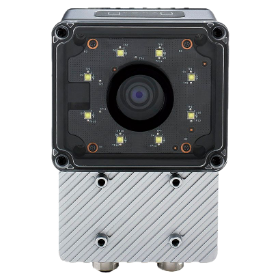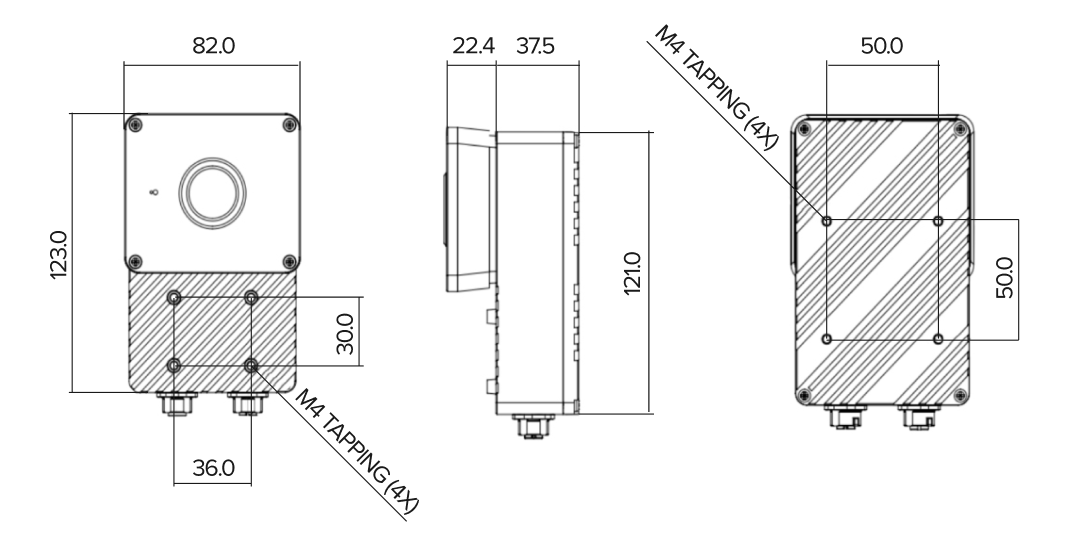Quick Install Guide
Follow these steps to physically install and power up your OV20i camera for the first time.
What's in the Box
- OV20i Smart Camera

- Mounting Plate or Bracket (if ordered)

- M12 17-Pin Cable (Pigtail or Extension)
- Ethernet Cable
- Optional: Terminal Block or Power Supply Adapter
Required Tools
- 4 mm Hex Key (for mounts)
- Small flathead screwdriver (for terminal block wiring)
- 24V DC Power Source (1.5A min recommended)
Electrical Connections
The OV20i uses a 17-pin M12 A-coded connector for all power, I/O, and communication.
- Power Pins:
- Pins 13 & 14 = 24V DC (+)
- Pins 5 & 6 = GND (−)
You may:
- Use a pigtail cable directly wired to a power supply.
- Or connect via a M12 to Terminal Block Base, which exposes all pins.
warning
Confirm pinout before powering. Incorrect wiring may damage the camera.
Mounting the Camera
- Use the included bracket or a custom rig.
- Ensure the camera is stable and secure.
- Position the camera at the working distance specified for your lens.
- OV20i uses S-mount lenses with fixed focal lengths (e.g. 12 mm, 25 mm).
- The camera includes a motorized focus for fine adjustment, but not optical zoom.
- Use lens specs to set the correct distance from the part.
- Avoid glare, shadows, or backlight for best results.
Network Setup
- Connect the Ethernet port to a laptop or switch.
- The camera ships with:
- Static IP:
192.168.0.100 - DHCP: Off by default (can be enabled in settings)
- Static IP:
- Set your computer to the
192.168.0.Xsubnet to communicate.
tip
Use the micro-USB debug port for emergency access (192.168.55.1).
Network Specifications
Overview.ai cameras (e.g., OV20i, OV80i) are industrial AI vision systems that typically meet the following network specs:
| Feature | Typical Value |
|---|---|
| Interface | 1 Gbps Ethernet |
| Protocol | TCP/IP (often with FTP/MQTT/REST/API) |
| Typical Bandwidth Usage | ~15–50 Mbps per camera (varies by image resolution, frequency, and AI model) |
| Peak Bandwidth | Can briefly spike up to 100–200 Mbps during image uploads or bursts |
Rule of Thumb (Per Camera):
- Minimum port speed: 1 Gbps
- Recommended per-port buffer: >100 KB to handle bursts
- Uplink/backbone capacity: If aggregating cameras to a switch, uplink should handle ~200–300 Mbps per camera (accounting for overhead)
Power-Up Check
Once powered:
- All 4 LEDs on top of the camera should light up.
- If only 3 or fewer turn on, verify voltage and pin alignment.
- Boot completes in ~30 seconds.
Ready to Go
In Chrome or Edge, open:
http://192.168.0.100
🔗 See Also
2D Drawings
Below is a 2D drawing for reference:

Download 3D Models
You can download 3D models for mounting and integration below:
OV20i: